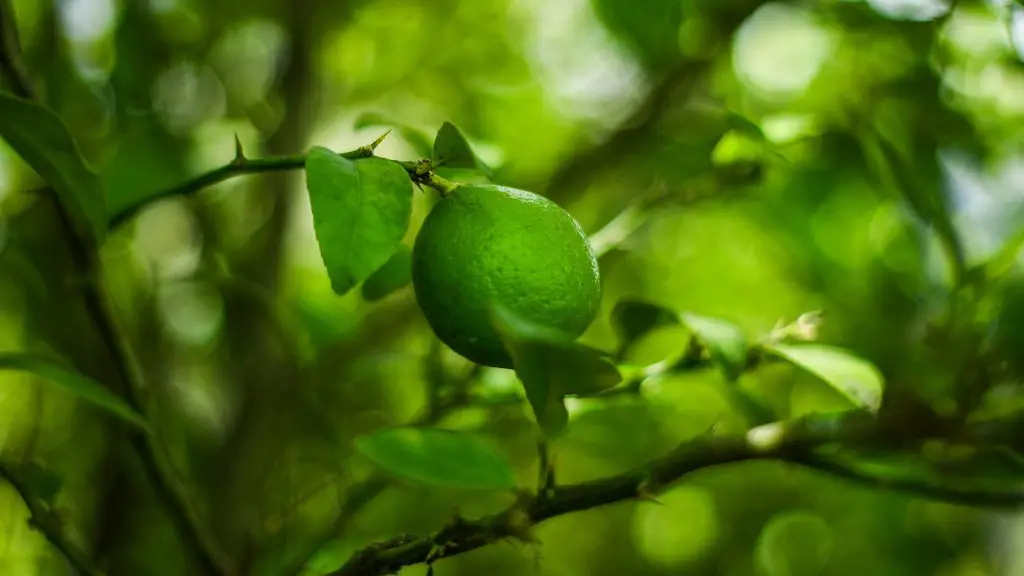Recognize When You Have a Dying Palm Tree
When attempting to revive a dying palm tree, it’s important to first recognize that you have one. There are several signs that a palm tree may be dying, such as discoloration, brown fronds, or yellow leaves. If your palm tree is suffering from any of these symptoms, it’s likely in need of help. Another sign of a dying palm tree is its leaves drooping. If you notice this, it could be a sign that the tree is not receiving enough water or sunlight.
Analyse the Environment Surrounding the Tree
Once you have identified the signs of a dying palm tree, you need to assess the conditions of its environment. Many times, the cause of a dying palm tree is as simple as a lack of water or too much shade. Low water supply is a common cause of palm tree death, particularly in climates with infrequent rainfall such as those in California and Arizona. Excess shade can also be harmful to a palm tree, as the tree needs sunlight to produce energy.
Evaluate the Soil Quality
The health of the soil surrounding the palm tree can also have a dire effect on its vitality. Poor soil quality can prevent the tree from taking up the necessary minerals and nutrients needed to survive. Additionally, if the soil is too dry, the tree may not be able to absorb the water it needs to remain healthy. Soil tests can help you determine if the soil conditions are ideal or need amending.
Check for Pests and Disease
Inspecting the palm tree for signs of pests or disease is also important when trying to revive it. Pests such as mealybug and scale can cause extensive damage to a palm tree, leading to their demise. Other diseases, including fungus, root rot, and blight, can also affect the tree’s health. If you find any evidence of pests or disease, contact an experienced arborist for assistance.
Proper Water and Fertilizer Regimen
If the tree appears to have a healthy environment and isn’t suffering from any diseases or pests, then a water and fertilizer regimen can help the tree revive. It’s essential to water a palm tree regularly, as the tree requires a lot of water to survive. It’s important to avoid overwatering the tree, as this can lead to root rot. Palm trees also need to be fertilized twice a year with a slow-release fertilizer to promote growth and health.
Provide Additional Support
If all other measures have failed to revive the palm tree, then additional support may be needed. A dying tree may require extra staking or cabling to support its stressed and weakened limbs. An arborist can provide this level of support, as they have the tools and expertise to determine the best course of action.
Pruning Dead Stems and Branches
Some palm trees may be helped by a pruning process. Removing dead stems and branches can provide the tree with more sunlight and air circulation. Additionally, it can provide more space for new growth and remove diseased areas, helping the tree revive.
Plant Stress Reduction Methods
One way to help revive a dying palm tree is by using a stress reduction method. Plants naturally produce stress hormones when facing extreme temperatures, lack of water, or other environmental changes. Plant stress reduction methods can help counteract these hormones, providing the palm tree with the essential nutrients and energy needed to revive.
Repotting
Repotting a dying palm tree can often provide the tree with the necessary environmental and nutritional environment to revive. In general, it’s recommended to repot a palm tree every two to three years. Repotting a dying palm tree earlier can provide the tree with new soil, ample root space, and the proper nutrients needed to revive.
Seek Professional Help
If all else fails, it may be necessary to seek the help of a professional arborist. They are trained to assess the state of a palm tree accurately and determine the best course of action. A certified arborist can provide personalized advice and treatment for the palm tree, reviving it in the most effective and timely way possible.

